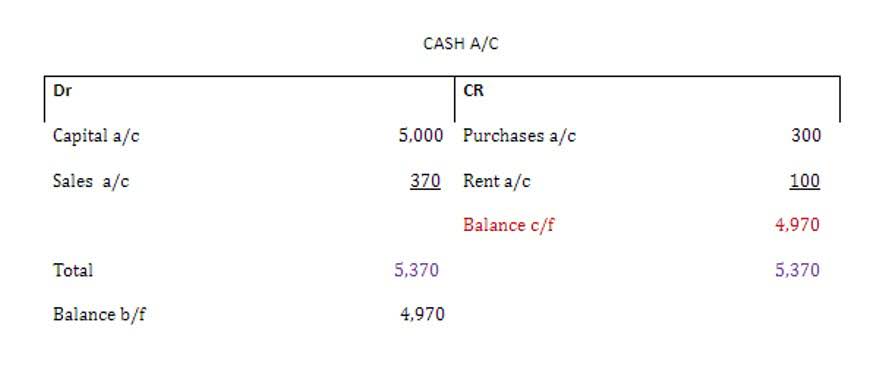Bookkeeping
Salvage Value: How to Estimate and Incorporate It in Capital Expenditure Analysis

It is a key component in calculating depreciation, which is the process of allocating the cost of a tangible asset over its useful life. Depreciation allows businesses to write off the value of an asset gradually, reflecting its usage and wear and tear over time. The salvage value is subtracted from the cost of the asset to determine the total amount that will be depreciated.
- For accountants, it ensures that the depreciation schedules reflect a realistic representation of an asset’s value over time.
- In the realm of digital marketplaces, the mechanics of online auctions represent a pivotal…
- Organizations must recognize the significance of salvage value in capital budgeting.
- It’s the value for which the asset can be sold or disposed of after it has served its purpose.
- Assets that incorporate innovative features or technologies may retain higher salvage values if they remain relevant in the market.
Economic Factors
Introduction to Payroll Taxes Payroll taxes are a crucial aspect of managing a business’s… This means, from an accounting perspective, the value of the car decreases by $3,000 each year. Real Estate and ConstructionBuildings and infrastructures may have different salvage values based on location and construction quality. Salvage value, often referred to as residual value, is the estimated value of an asset at the end of its useful life.
The Importance of Accurate Salvage Value Calculation

It just needs to prospectively Mental Health Billing change the estimated amount to book to depreciate each month. Salvage value is important because it becomes the asset’s value on company books after depreciation. It is based on the value a company expects to receive from the sale of the asset at the end of its useful life. In some cases, salvage value may just be a value the company believes it can obtain by selling a depreciated, inoperable asset for parts. For example, consider the value of land owned by a company that only slightly went up in value by the end of its useful life.

Methods for Estimating Salvage Value
Countries might implement more rigorous auditing processes to ensure that businesses do not overstate salvage values to reduce their taxable income. Companies may use software tools like Sage Fixed Assets or Asset Panda to aid in calculating salvage value. These programs help track asset depreciation and estimate salvage values based on historical data and market trends, reducing the likelihood of human error. Accumulated depreciation is a critical accounting concept that reflects the reduction in the value of an asset over time. As tangible assets are used in operations, they inevitably wear and tear, leading to a decline in their utility and, consequently, their value. This decrease is systematically recorded through depreciation, which allocates the cost of an asset over its useful life.
- From an individual taxpayer’s standpoint, reporting salvage income ensures compliance with tax laws and can affect one’s taxable income.
- The useful life assumption estimates the number of years an asset is expected to remain productive and generate revenue.
- Calculate the annual depreciation by subtracting the residual value from the PP&E purchase price and dividing that amount by the useful life assumption.
- Note that the salvage value is ignored as this cash inflow occurs at the end of year 4 when the machine is sold.
- Remember that while formulas and methods provide a framework, real-world judgment and context play a vital role in determining salvage value for specific assets.
- After researching the second-hand market for similar vehicles, considering expected wear and tear, and consulting with a vehicle depreciation expert, the company estimates a salvage value of $5,000.

This method also calculates depreciation expenses based on the depreciable amount. The double-declining balance (DDB) method uses a depreciation rate that is twice the rate of straight-line depreciation. Therefore, the DDB method would normal balance record depreciation expenses at (20% × 2) or 40% of the remaining depreciable amount per year. Estimates may not always accurately reflect future market conditions, which can lead to a discrepancy between the estimated and actual salvage values. NBV is used to demonstrate a company’s value and estimate its total financial worth. It’s helpful to investors who require context for the value of assets held within the company beyond its cash holdings or debt.

Therefore, salvage value is treated as: it is important to incorporate salvage value in the capital expenditure analysis and use appropriate discount rates to calculate the present value of the salvage value. Generally, salvage value increases the NPV and IRR of a project, as it reduces the net investment and increases the net cash flow. However, the magnitude and direction of the impact depend on the size and timing of the salvage value, the depreciation method, the tax rate, and the discount rate. For example, salvage value has a larger impact on NPV and irr when it is higher, occurs sooner, uses a straight-line depreciation method, has a lower tax rate, and has a lower discount rate. Understanding the tax implications of depreciation and salvage value is crucial for businesses as it affects their financial statements and tax obligations.
- A positive salvage value at the end of the asset’s life is treated as a negative cost.
- This technology allows companies to enhance decision-making, reduce risks, and optimize asset management strategies.
- From an accounting perspective, it affects companies’ depreciation and amortization expenses.
- For example, a company may decide it wants to just scrap a company fleet vehicle for $1,000.
- The residual value, also known as salvage value, is the estimated value of a fixed asset at the end of its lease term or useful life.
- The units of production method stands out for its direct correlation to asset usage, making it ideal for machinery and vehicles.
It represents the amount a company expects to receive when the asset is disposed of, after accounting for depreciation and other factors. Understanding salvage value is crucial when making changes in accounting estimates, as it directly influences the depreciation expense and financial reporting for long-term assets. Navigating the future tax implications of salvage value scrap is about staying informed, being adaptable, and engaging in proactive planning.
For example, a manufacturing company may sell off old machinery for scrap, and the proceeds are considered the salvage value. This value directly affects the company’s profit and loss statement and, therefore, its tax obligations. By carefully considering the salvage value and its implications, businesses can maximize their tax deductions, ensuring a more favorable financial outcome. It’s a balancing act between deriving the most value from an asset while adhering to legal and regulatory standards. Understanding the legal framework surrounding tax laws on salvage is essential for making informed decisions that optimize tax outcomes. Whether it’s a matter of recognizing income, recapturing depreciation, or exploring deductions, each scenario requires a nuanced approach that aligns with the prevailing tax code.
In the realm of asset management, strategic planning plays a crucial role in determining the end-of-life value of assets, commonly referred to as salvage value. This value is not merely a residual figure; it represents the potential return an asset can generate once it has served its primary purpose. From a financial perspective, salvage value is pivotal in calculating depreciation, influencing both the asset’s book value over time and the capital budgeting decisions of a company. It’s a figure that holds significance for accountants, tax professionals, and financial planners alike.
